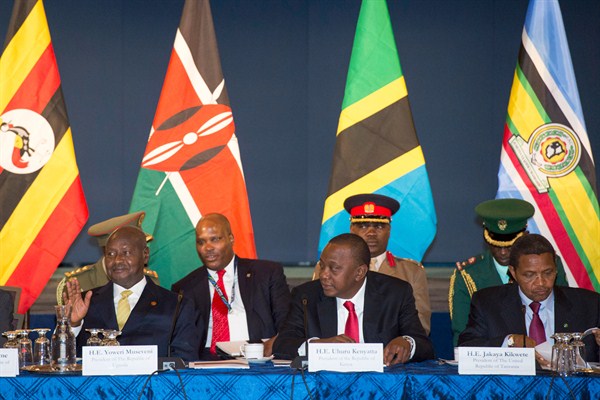Last month, Tanzanian authorities confiscated the passports of Kenyan officials who were in Tanzania with a team of Ugandan officials working on an analysis of proposed routes for a multibillion-dollar oil pipeline, denying them access to the port of Tanga. In an email interview, Jonathan Markham, an upstream analyst with GlobalData, discussed the dispute between Kenya and Tanzania over the proposed pipeline to export Ugandan oil.
WPR: What are the proposed pipeline routes from Uganda, and what are the advantages and disadvantages of each route?
Jonathan Markham: A range of possible pipeline routes to ports has been proposed, including Lamu and Mombasa in Kenya and Tanga in Tanzania. In August 2015, the Kenyan and Ugandan presidents agreed on a proposed pipeline starting at Hoima in Uganda, passing through Lokichar in northern Kenya and continuing to Lamu. This was chosen ahead of a route from Hoima through Nairobi to Mombasa in southern Kenya. However, in October 2015, Uganda signed a separate agreement with Tanzania for a feasibility study on a competing route through southern Uganda and northern Tanzania to Tanga. In March 2016, Uganda and Tanzania signed agreements to start construction of this pipeline by August 2016.

